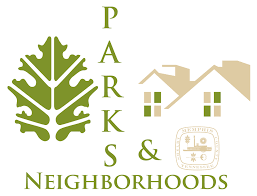From Atlantic Cities:
When Mark Aesch became head of the Rochester-Genesee Regional Transportation Authority, back in 2004, the metro area’s bus system was in terrible shape. The agency carried a $4.5 million deficit and on-time performance was stuck at 76 percent. Officials wanted to approach the problem the way so many other city agencies were handling similar situations at the time: with a fare hike. Aesch said no.
“There was no way in my judgment we could ask the customer to pay more for an underperforming experience,” he recalls.
Not only did Aesch keep his pledge not to raise fares, but in 2008 he actually lowered them. By the time he left the position, at the end of 2011, Aesch and his creative approach had transformed Rochester’s bus system into a total winner. Buses drove fewer miles, carried more passengers, and boasted a 91 percent on-time record. The agency accumulated a $35.5 million surplus while decreasing its reliance on taxpayer funding by more than a third.
Aesch has since started a consulting firm called TransPro and written a book called Driving Excellence. His mission with both is to encourage transit officials to bring a “private-sector mindset” to public transportation. So far it’s working. Last year, Aesch even stabilized the bus system in Detroit, of all places. If his methods can succeed there, they should do well in any number of struggling systems across the country.
“I think the model works in almost any location,” says Aesch. “Improving the quality of the customer experience, creating that atmosphere where the individual employee is rewarded for organizational success — that’s critical. You can do that anywhere.”
These days the public expects transit agencies to cut service or hike fares when funding runs low. But Aesch’s entire philosophy is based on the belief that the best way to raise both ridership and revenue is by improving the transit experience.
In Rochester, Aesch and colleagues took aim at the poor on-time performance of city buses. Using data to evaluate system routes, they realized that much of the problem came from buses that were early, not late. Soon they identified the culprit: because routes had down time built in at the end, drivers were rushing to finish up and take a longer break.
As the system began to improve, Aesch created incentives to keep things moving in the right direction. He concocted a so-called “stock price” for the system and tied it administrator compensation. When performance improved, so did pay. Eventually enough drivers realized the advantages of merit-based compensation that the union voted to tie their paycheck to performance, too — something Aesch says would have been “unimaginable” when he first arrived.
His biggest achievement came through securing partnerships with the community. Once bus service improved, Aesch sent out a sales force to college campuses, shopping centers, apartment complexes, and the like, and asked them to pay for the better service that now carried so many students and customers and residents through their corridors. Sometimes he drew a comparison to a utility: just as a housing development might pay the water bill for tenants, so too should it pitch in for transit.
“If the model of public transportation is simply to ask the taxpayer for more money or the customer for more money, it’s a short path to reducing service and reducing quality,” says Aesch. “You’ve got to go identify new business partners to fund public transportation with non-taxpayer dollars.”
A big fear that many people have about a private-sector approach to public transit is that rewards efficiency at the expense of providing a social service. If a particular route isn’t capturing much fare revenue, for instance, then business-minded officials might be more apt to cut it. That approach could end up stranding riders — particularly those in low-income corridors.
Aesch says he’s responded to this concern by creating a service metric that gives equal weight to ridership and fare recovery. So if a certain route does well at the farebox, it’s a keeper, and if another route has a lot of riders, it’s a keeper, too. What won’t score well on this metric, he says, are those routes that neither make money nor seem to play a vital role in the community. These are the ones that efficient systems should be aiming to cut.
“You ask yourself the fundamental question: is public transportation responsible for providing service to the community, or providing return to the taxpayer?” he says. “The answer to that question, we concluded, is yes. So what we built was a performance-measurement system which takes both of those competing metrics and combines them into one score.”
Last year Aesch’s system passed what some might call the ultimate test. In the wake a series of embarrassing bus crises in late 2011, Detroit brought in Aesch to overhaul service. Despite being given only a year to produce results, Aesch improved on-time performance, kept ridership stable, avoided a fare hike, saved the agency roughly $39 million, and even improved customer satisfaction by 40 percent.
While he says the future of Detroit’s public services is up to the emergency manager, he does think his year there proved that his methods can apply to transit agencies big and small.
“It’s one thing to transform a transit agency Rochester, New York,” he says. “It’s another thing to reduce cost and improve customer satisfaction in the city of Detroit, where very few things succeed.”



